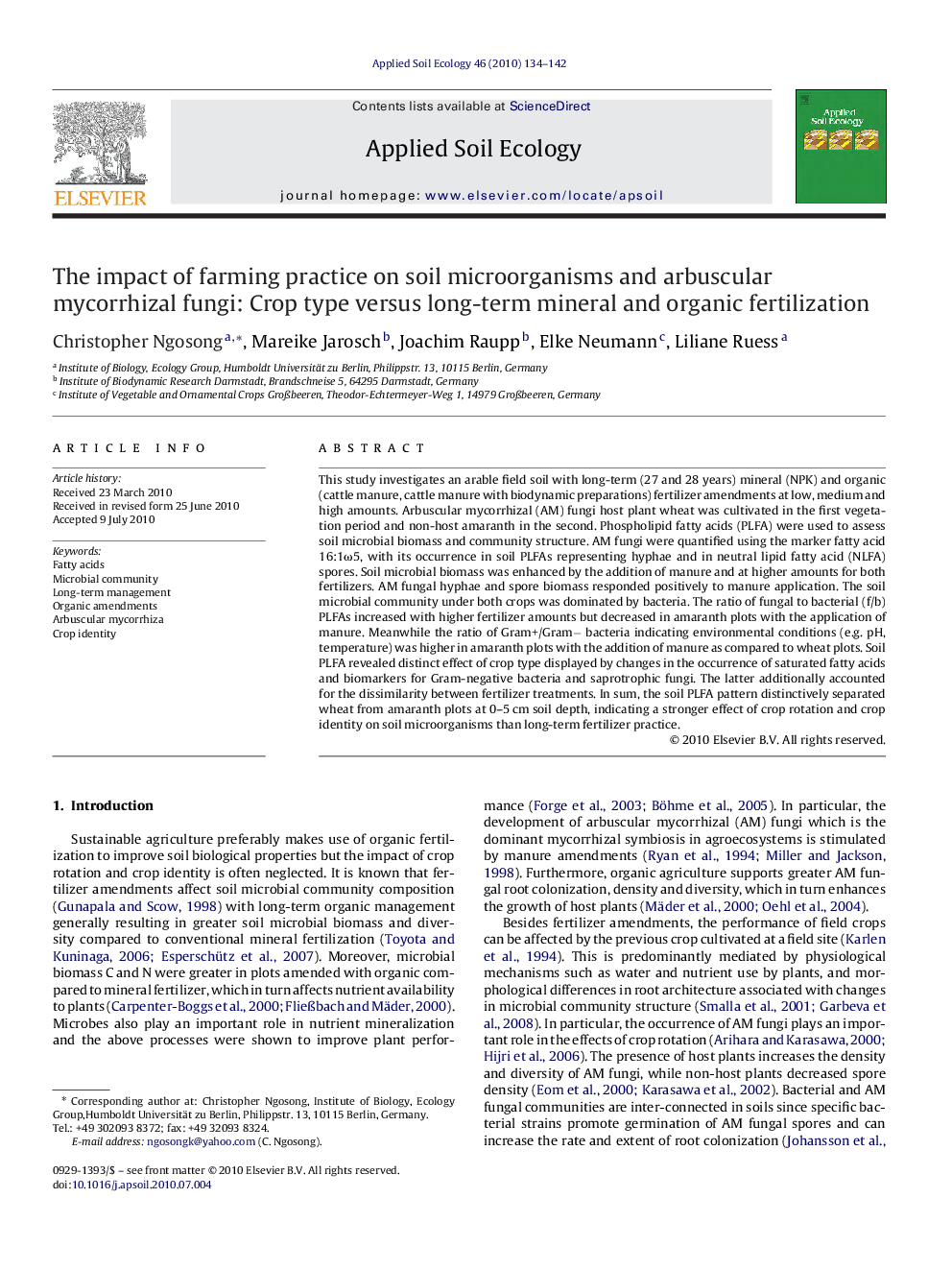| Article ID | Journal | Published Year | Pages | File Type |
|---|---|---|---|---|
| 4382778 | Applied Soil Ecology | 2010 | 9 Pages |
This study investigates an arable field soil with long-term (27 and 28 years) mineral (NPK) and organic (cattle manure, cattle manure with biodynamic preparations) fertilizer amendments at low, medium and high amounts. Arbuscular mycorrhizal (AM) fungi host plant wheat was cultivated in the first vegetation period and non-host amaranth in the second. Phospholipid fatty acids (PLFA) were used to assess soil microbial biomass and community structure. AM fungi were quantified using the marker fatty acid 16:1ω5, with its occurrence in soil PLFAs representing hyphae and in neutral lipid fatty acid (NLFA) spores. Soil microbial biomass was enhanced by the addition of manure and at higher amounts for both fertilizers. AM fungal hyphae and spore biomass responded positively to manure application. The soil microbial community under both crops was dominated by bacteria. The ratio of fungal to bacterial (f/b) PLFAs increased with higher fertilizer amounts but decreased in amaranth plots with the application of manure. Meanwhile the ratio of Gram+/Gram− bacteria indicating environmental conditions (e.g. pH, temperature) was higher in amaranth plots with the addition of manure as compared to wheat plots. Soil PLFA revealed distinct effect of crop type displayed by changes in the occurrence of saturated fatty acids and biomarkers for Gram-negative bacteria and saprotrophic fungi. The latter additionally accounted for the dissimilarity between fertilizer treatments. In sum, the soil PLFA pattern distinctively separated wheat from amaranth plots at 0–5 cm soil depth, indicating a stronger effect of crop rotation and crop identity on soil microorganisms than long-term fertilizer practice.
